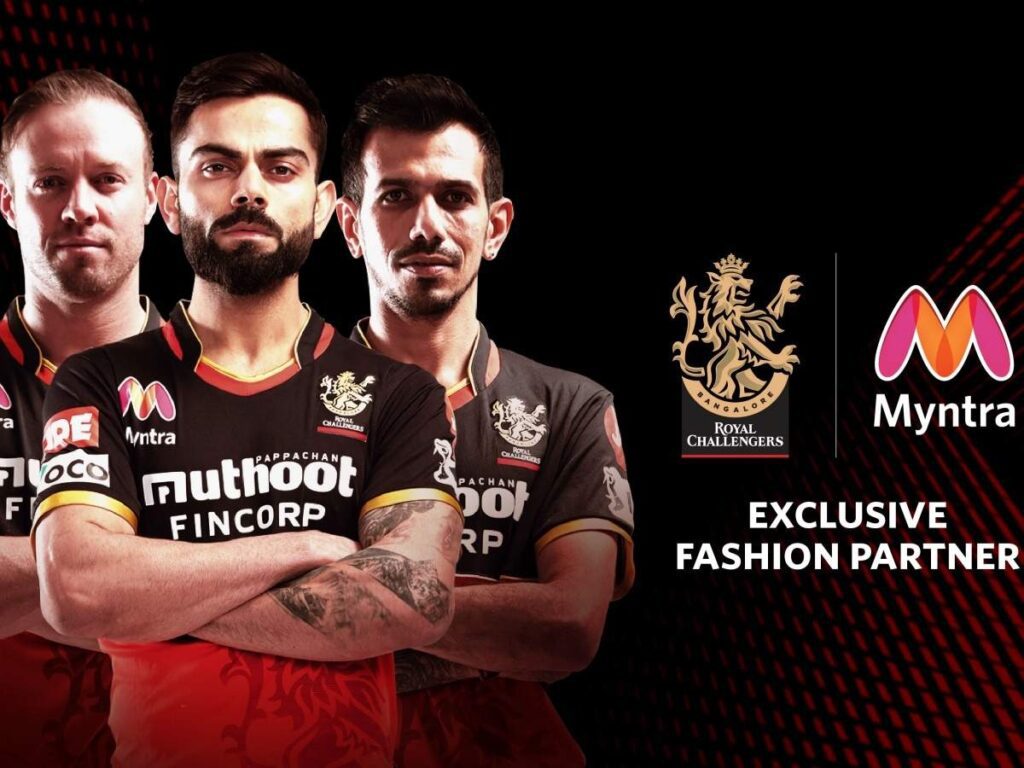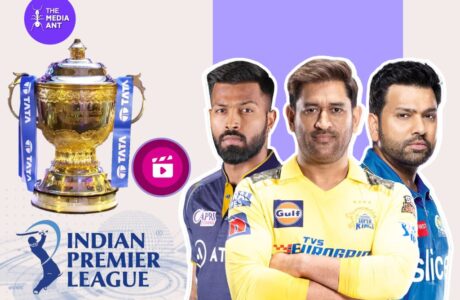Suppose a universe such that every chat, cheers and any spirit combustion about sports has not just the elements of passion but also an opportunity to metamorphose from fanatics into customers. Something is happening in the center of India here, where cricket resounds across streets, paths roar with football and the vigor of kabaddi’s, a digital revolution is unfurling its wings. It’s a story where the roar of the fans isn’t just a sound but a powerful force driving a new era in the sports marketing industry.
This story takes off in the crowded alleys of Mumbai, under flashlights from an overcrowded turf during a match featuring cricket legends shining on digital screens. It flows through the football grounds in Kolkata, where it transcends to a near-silent AI generated insights and relates them into personalized fan experiences. A diversion through the kabaddi mats of Punjab is provided whereby augmented reality allows fans to register closer to their power-packed action. This is not just an article on sports, but the story of how digital content, themed advertising and technological evolution fuse to reshape fans into consumers, passion into profits.
The Power of digital content in sports marketing

The digital age has brought a new paradigm to sports fans’ interaction. According to a KPMG report, the Indian sports sector digital engagement increased by 22 per cent in three years. This spike is primarily because of the personalized and integrated content that social digital platforms deliver.
The digital content – especially social media posts to live streaming, podcasts and interactive apps has changed the way fans relate with their take on sports teams. It offers a consistent linkage, not limited to live events. For example, the IPL uses social media platforms to deliver highlights, player interviews and behind-the-scenes content through which fans remain connected even outside of cricket season.
Digital content brings various opportunities for monetization. This encompasses revenue such as per-view events, subscriptions for proprietary content and indirect ones like increased merchandise sales through targeted marketing. Sports teams, events and organizations also provide valuable digital advertising space to brands through their online assets.
The personal story is the most effective way to establish an emotional connection with fans, depending on stories about a team’s history, player journeys and memorable moments. This type of storytelling establishes and reinforces the brand identity for sports teams or leagues. It refers to introducing a more dedicated, customized and massive audience fan base for revenue creation potentials based on higher brand loyalty. However, the emerging sector of sport in India will be dependent on tapping into this power if they are to rely entirely upon a digitally driven future.
Case Study : IPL’s Digital content strategy
In terms of digital content, IPL is a source of inspiration for innovative marketing strategies.
The Social Media Strategy of Rajasthan Royals

One of the eight founding franchises, Rajasthan Royals had to struggle with not as solid a fan base like many other teams owned.In a bid to develop an effective social media reach, these companies concentrated on content that was both entertaining and relevant. They utilized social media, such as Instagram, Twitter and Facebook to stream behind-the-scenes content by interviews with players and interactive materials like quizzes and polls.
Outcome:
Increase Engagement: Behind-the-scenes content created an extremely high level of engagement, especially among fans who felt closer to the players.
Merchandise Sales : There was a significant increase in sales of team merchandise as the fans identified more with the trust.
Fan base Growth: The team experienced an impressive increase in their social media followers, surpassing beyond the immediate geography.
Virtual fan engagement for Kolkata Knight Riders

The COVID-19 pandemic presented sports teams across the world with a major challenge – limiting spectators from live matches. However, the KKR evolved means of reaching their fans in spite of these limitations.
KKR capitalized on digital platforms to establish virtual fan experiences. This involved a live streaming of matches using the interactive commentary, virtual fan meetings with players and online contests for fans.
Outcome :
Sustained Fan Engagement: With no live games, the fans still remained engaged.
Sponsorship value: The digital platforms were used innovatively to offer additional value for sponsors, despite the lack of physical activities.
Brand Loyalty: This strategy helped to keep and strengthen brand commitment even in such a difficult time.
Leveraging Fan Engagement for Sales
The Indian sports industry has seen a remarkable shift in fan engagement strategies, particularly in leveraging digital platforms to drive sales. The strategies of some major players helps us understand how they have successfully converted fan passion into tangible business outcomes. Take example of –
Dream11: The transformation of fan engagement via Fantasy Sports.

Dream11 is one of the leading fantasy sports platforms that has shown impressive fan engagement and interaction levels. The platform was able to achieve a massive concurrency level of 10.56 Million users during the TATA IPL in 2023, which almost doubled from last year’s benchmarks. The introduction of many interactive elements like personalized content and the Fan Battle feature allowing fans to win virtual currency has clearly had an impact on user experience with Dream11 leading a further increase in engagement about 40%.
Myntra: IPL Fever with Themed Merchandise Exploited

In the case of Myntra, an online shopping sensation, IPL was utilized to launch a limited -edition line for its promotional merchandise. This campaign, which involved the use of unique content alongside influencer marketing tactics, capitalized on IPL fanatics. Myntra with a major sporting event due to this strategic alignment recorded as much as 30% sales growth. This campaign bears further testimony of the power that thematic merchandising holds at penetrating consumers’ base in sports sectors.
Pro Kabaddi League: Local Heroes Driving Regional Engagement

The strategy adopted by the Pro Kabaddi League in terms of fan engagement was based on local heroism. With the creation of regional content focusing on star players, which help in raising a significant viewership by 25% especially among people living outside major cities. This approach not only improved the appeal of the league among local spectators but also contributed to an increase in sponsorship contracts. The league’s grasp on the customer base and ongoing involvement in smaller cities, a market sector that is typically forgotten by general sports leagues.
The Role of Influencers and Brand Ambassadors
Prominent cricketers such as Virat Kohli, MS Dhoni and Rohit Sharma have been at the top of brand endorsements in India. There are more than 30 brands per each of them. This level of brand engagement isn’t just confined to established rivals, budding greats in cricket are also becoming celebrities for endorsements.
Indeed, thanks to players like Harmanpreet Kaur, Mithali Raj, and Smriti Mandhana in the Indian women’s cricket team it has been growing with momentum especially after 2023 rollout of Women’s Premier League. This assortment showcases the widening of appeal of cricket beyond male sportsmen.
Indian sports sponsorship has grown at an astonishing 105% to INR 5907 Cr (US$748 mn). This upsurge encompasses an INR 749 Cr ($95 million) amount of sports celebrity endorsements that rose by 20%. Cricket forms a dominant share of the industry, accounting for 85% to total revenue INR 12115 Cr($$ in worthwhile). Sports viewership and popularity of some sporting events have created investment opportunities for brands to reach out to the masses.
In India, the field of influencer marketing has gained much momentum. It is especially potent since it can address specific demographics and niches. It has been estimated that about 60% of marketing professionals view influencer marketing as a strategic imperative. Many sectors, including fashion, e-tailing food and drinks.
The fitness industry is especially evident in the way brands use influencers for marketing. This strategy is viewed as more affordable and familiar relative to old-fashioned ways of promotion. Subject-expert influencers provide their followers with greater levels of trust, thus increasing the efficacy of endorsements.
Interactive and Immersive Experiences

From Deloitte’s case of the sports industry we see that it changes and develops over time, so there is a rapid accent on attention to sport. The shift to digital and interactive media also becomes evident as portrayed by sports fans who require more personal interactions in their entertainment niche.
They also are not only limited to watching sport; they provide a plethora of interactive attributes namely live betting, playing matches from the on-field player’s perspective and entertainment viz. Backstage or Exclusive footage (feature). However, the change to a more linked and digital adventure is most notable among younger fans for example Gen Z who desire to have memorable social engaging features in sport activities.
In addition, the Deloitte Global’s Sports Industry Outlook of 2023 connotes that physical and digital experiences in sports continue to coalesce. This direction, which is represented by the efforts aimed at developing something new and offering a better experience to fans. The sports industry is eager to advance emerging technologies in order to make live events more immersive and provide better experiences for fans who are watching at home. These include modern digital assets such as NFTs and sophisticated digital collectibles, which are continuously being developed to promote better relationship management with fans through loyalty initiatives that will also introduce new business models along with alternative forms of revenue generation.
It is, therefore, essential to understand the role played by 5G in changing what we experience as ridicule of a sport. Among other things, Ericsson predicts the 5G technology will spell a revolution in sport viewing due to enhanced mobile broad experiences and creation of secured wireless technologies whereby users can submerge into created images such as augmented reality (AR)and virtual reality (VR).
For example, the Multi-View functionality of Verizon’s multi 5G allows fans inside stadiums to have access to multiple HD videos streaming through their smartphones wherein there is a personalized player view in front in real time. Besides enhancing the viewing area, this technology provides effective sports analytics hence influencing teaming strategies and dictating their decisions. The gradual adoption of 5G by stadiums will lead to new economic opportunities and income streams for service providers, mainly due to its ability to live player experience in person at a venue and from the comfort of one’s home.
Opportunities Ahead

Enhanced Fan Engagement and Revenue Generation:
Digital Technologies and Fan Insights: Modern sport management and tech experts believe that the introduction of digital technologies into modern sports increases understanding, as well as fosters relationships between fans. Digital analytics allow for fan preferences to be better understood by Deloitte’s report, which results in more concrete and directed campaigns.
Personalized Experiences: This practice increases the value offered by fan interactions, which further strengthens customer loyalty and eventually leads to higher sales.
New Revenue Streams through Data Monetization:
Monetizing Fan Data: Deloitte reports that there is a chance available for sports teams to monetize the data they get from fans. This can be achieved through the sale of raw information, data trading or applying it in accordance with one’s brand contextual insights.
Innovative Revenue Models: Metrics -driven approaches provide new revenue models that were not accessible before; this is another opportunity to grow the industry.
Government Initiatives and Digital Audience Growth:
Government Support: At the same time ‘Invest India’ emphasizes the importance of various programs by an Indian government, which are of interest for the development of the sports industry such as ‘Khelo India Programme’ and budgets about sport rise value inscription.
Increasing Digital Consumption: The report also states the rise of online access for sports content consumption which is motivated by digitally literate young audiences and increased internet penetration that resulted in high bids on digital rights participation to events such as IPL.
Digital Transformation Hurdles:
Organizational and Technological Challenges: Deloitte’s report shows that adopting digital demands overcomes human challenges in the form of leadership vision, cultural resistance change adaptation skaters and aging workforce etc; Besides process challenge legacy systems disconnected IT architecture.
Need for Digital Skill Sets: It also highlights the need to incorporate digital assets and train staff according to what’s required from an environment that involves digital channels.
Ensuring Data Privacy:
Data Protection and Trust: The University of Kansas touches on the importance that must be placed upon privacy in data collection following increased information accumulation, with this article illustrating sports organizations’ need to reliably balance personalized experiences from fan rights
In conclusion, the sports industry is on the brink of a digital revolution that will change fan engagement and revenue generation as we know them. The adoption of advanced digital technologies has created numerous opportunities including improved fan engagement through personalized interactions and data monetization to new revenue models. The Deloitte report and insights from Invest India point to the opportunities for sports clubs in using fan data as a means of targeted marketing and revenue growth. Moreover, the growing trend of digital consumption especially among the young and tech-savvy population shows that there is a new way in which sports content will be consumed.
But achieving these opportunities is not without its pitfalls. Organizations have to grapple with the intricacies of digital transformation and address challenges such as resistance within organization, technological limitations, and lack of required skills. On the other hand, with an increase in fan data volume, it is important to keep a balance between personalization and privacy of information as indicated by University of Kansas.
As the road ahead demands strategic thinking, sports entities should not only welcome digital innovation but also develop a culture that is open to change and adheres ethically to data practices. Through overcoming these challenges, the sports industry can use digital developments to create powerful fan experiences and open new revenue streams in a world where everything is online.





